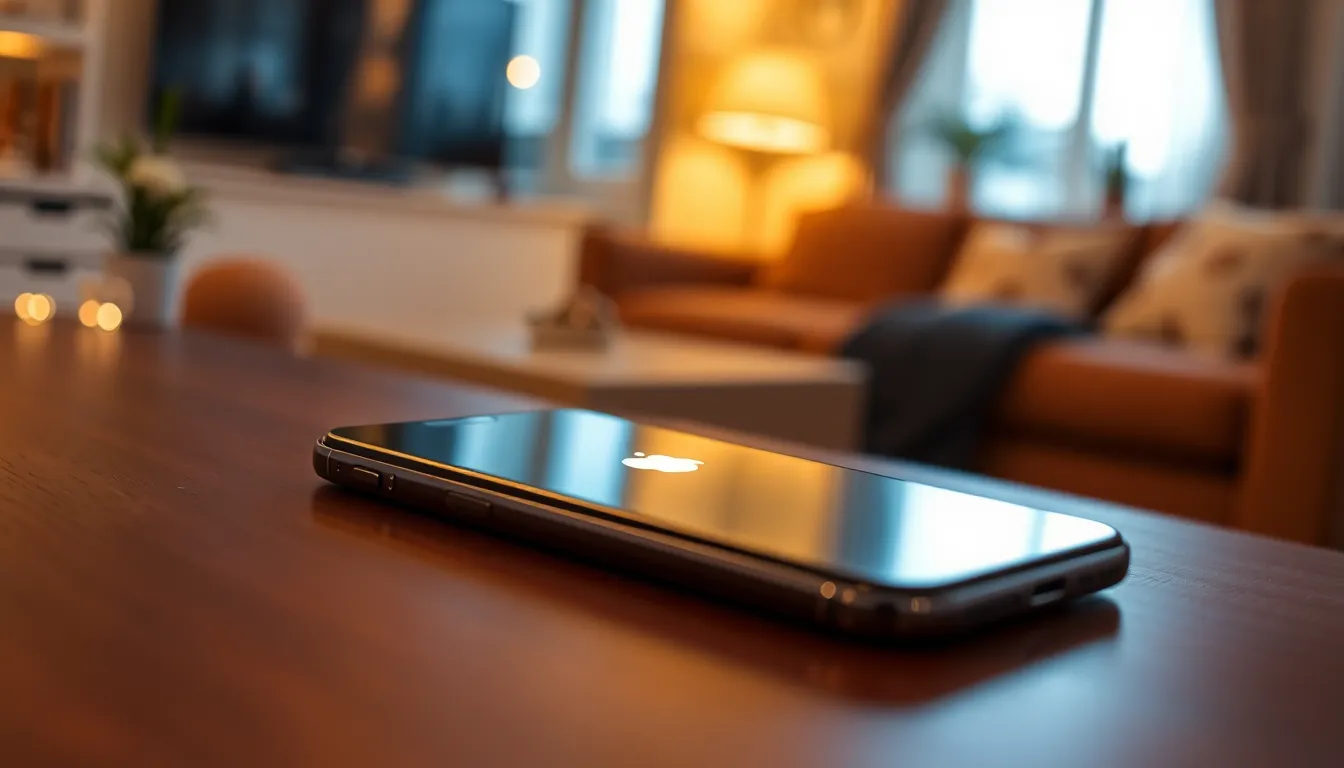Picture this: you’re ready to call it a day, but your iPhone has other plans. Instead of powering down, it’s acting like a toddler refusing to go to bed. Frustrating, right? Whether it’s a stubborn app or a mysterious glitch, not being able to turn off your device can feel like a scene from a tech horror movie.
But don’t worry, you’re not alone in this digital dilemma. Many users find themselves asking, “Why is my iPhone not powering off?” The good news is there’s usually a simple explanation behind this pesky problem. Let’s dive into the quirks of your beloved gadget and uncover the reasons why it might be playing hard to get when it’s time to shut down.
Table of Contents
ToggleCommon Reasons Your iPhone Is Not Powering Off
Several factors can contribute to an iPhone’s failure to power down as expected. Understanding these reasons simplifies troubleshooting for users.
Software Glitches
Software glitches often cause iPhones to become unresponsive. An outdated iOS version can lead to unexpected behavior, including power issues. Background apps may interfere with shutdown processes, causing the device to appear stuck. Factory settings can get corrupted, leading to these anomalies. Restarting the iPhone usually resolves minor glitches. Keeping the device updated promotes smoother operation and minimizes such occurrences. Users should check for system updates regularly.
Hardware Issues
Hardware problems frequently impact an iPhone’s ability to power off. A malfunctioning power button could prevent proper shutdown. Physical damage, like a cracked screen or interior components, might disrupt functionality. Battery failure results in unstable power, leading to shutdown difficulties. If the device experiences extensive heat or moisture damage, it can affect power management. Examining the device for physical signs of damage can provide insight into potential issues. Seeking professional repair services could resolve persistent hardware concerns.
Troubleshooting Steps

Users facing an unresponsive iPhone can follow these troubleshooting steps to resolve the issue effectively.
Force Restart Your iPhone
A force restart can often fix software glitches. To perform this, press and quickly release the Volume Up button, then press and quickly release the Volume Down button. Next, press and hold the Side button until the Apple logo appears. This method usually restores normal function. If the issue persists after the restart, users may need to explore additional troubleshooting methods.
Update Your iPhone Software
Keeping the iPhone software updated plays a crucial role in its performance. Outdated iOS versions can lead to bugs and exploits, preventing proper shutdowns. Navigate to Settings, then select General and Software Update to check for available updates. Installing the latest iOS version often resolves many underlying issues. Regular updates not only enhance functionality but also improve security, ensuring a smoother experience.
Advanced Solutions
Advanced solutions can effectively address the issue of an iPhone that won’t power off. Users may find that restoring their device or contacting Apple Support helps resolve persistent problems.
Restore Your iPhone
Restoring an iPhone through iTunes or Finder can fix deeper software issues. To start, connect the device to a computer and open iTunes or Finder. Users should select their iPhone model and choose the ‘Restore’ option. This process erases all data, so ensuring a backup exists is crucial. After confirming the action, the device resets, usually solving shutdown problems by eliminating corrupted files or conflicts. Once completed, users can set up their iPhone as new or restore from a backup.
Contact Apple Support
For ongoing issues, contacting Apple Support offers professional assistance. Users can visit the official Apple website or use the Apple Support app to schedule a diagnostic appointment. Live chat and phone support are also available for immediate help. Trained professionals can analyze the problem, recommend solutions, or arrange necessary repairs. Documentation of the problem, including error messages, enhances the support experience. Taking these steps ensures users receive tailored solutions directly from the source.
Preventative Measures
Taking proactive steps can prevent iPhones from experiencing power-off issues. Users can adopt effective strategies to ensure their devices function smoothly.
Regular Software Updates
Updating software regularly keeps the iPhone’s operating system current. New updates often include bug fixes, security enhancements, and performance improvements. Users should check for updates frequently through the “Settings” app. Engaging in these updates reduces the chances of experiencing software glitches that cause shutdown problems. Automatic updates can be enabled to make this process seamless, ensuring the device stays optimized without manual intervention.
Proper Use of Power Button
Using the power button correctly plays a crucial role in shutting down the iPhone. Users should ensure the button isn’t pressed too hard or too lightly during shutdown. Proper application of pressure can prevent the button from sticking or malfunctioning. Regularly checking to see if the button feels responsive helps identify any issues before they become significant. They should avoid unnecessary force on the button when powering off. Recognizing signs of wear and tear can prompt users to seek repairs or replacements when needed.
Experiencing issues with an iPhone that won’t power off can be frustrating. Understanding the potential causes helps users take the right steps toward resolution. From simple software fixes to more complex hardware concerns there’s a range of solutions available.
By regularly updating software and performing necessary troubleshooting users can often resolve these problems without professional help. However if issues persist seeking assistance from Apple Support is a wise choice. With the right approach and preventative measures users can enjoy a smoother experience with their devices.








